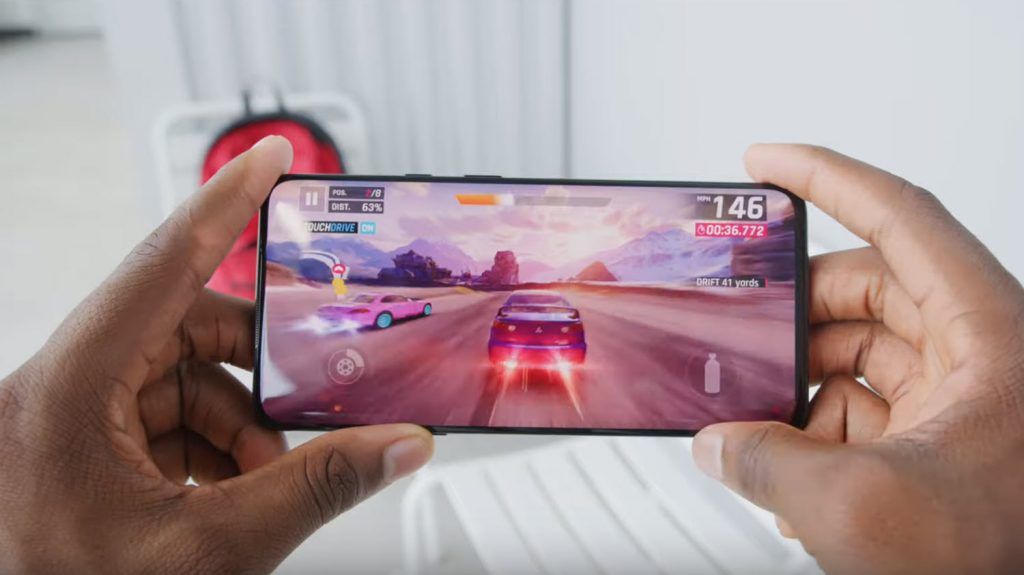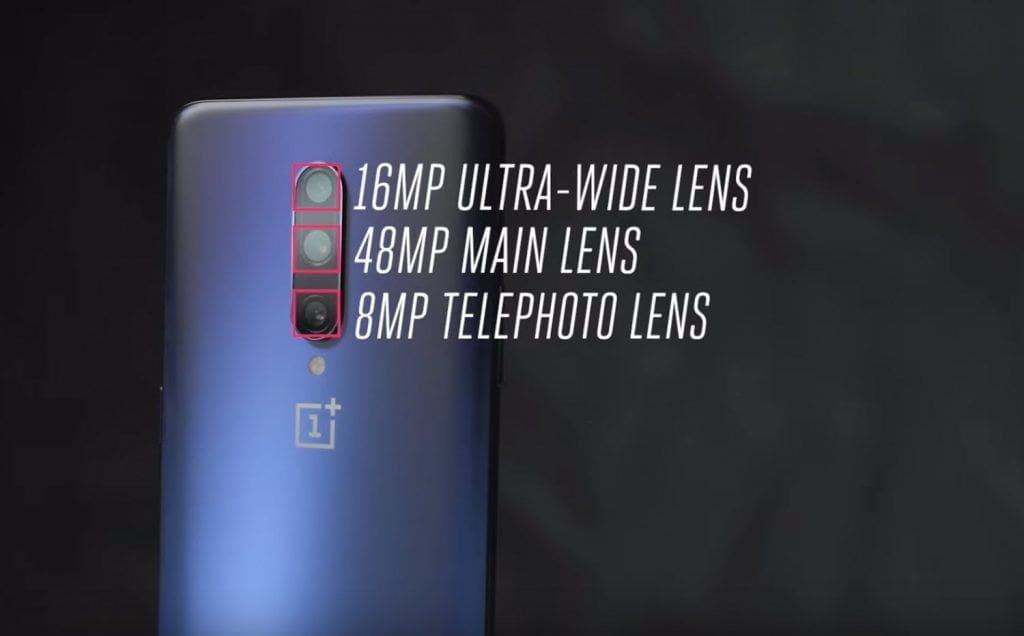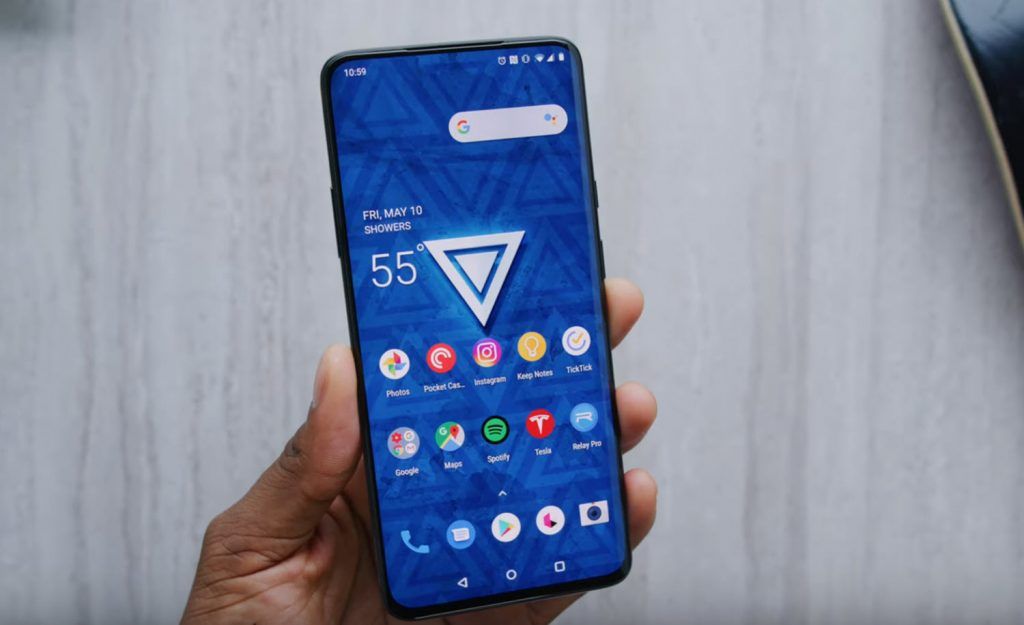After several leaks and and speculation, OnePlus has unveiled its latest smartphone — actually, it launched two. The first is the familiar-looking OnePlus 7, which will be available later this year in select markets. But the central focus is the all-new OnePlus 7 Pro, which is available this week everywhere OnePlus phones are sold.
Tech Specs

Both new models bring the latest processor from Qualcomm, multiple camera arrays, large screens, large batteries, stereo speakers, and OnePlus’ proprietary fast-charging systems. The 7 Pro debuts a number of firsts for the company. It’s the first truly full-screen OnePlus phone without a notch or other screen cutout for a front camera, it’s the first OnePlus phone with a QHD+ (2k) display resolution, and it’s the first OnePlus phone with three cameras on the back (in a wide, standard, and telephoto configuration).
OnePlus 7 Pro Great display
The main attraction with the OnePlus 7 Pro is its display. At 6.5 to 6.7-inches, depending on if you account for the curved corners or not, it’s a massive OLED display with just the trimmest of bezels surrounding it. The screen also has curved sides, which give the phone a very Samsung-like profile.
The 7 Pro has no notch or hole-punch cutout interrupting from the screen because it is hiding the front-facing camera in a motorized module that pops up out of the top of the phone. The company claims that the motor can withstand over 300,000 openings and closings, which equates to roughly 150 times per day for over five and a half years.
In addition to the expansive size and lack of bezels, the OnePlus 7 Pro’s screen refreshes at a rate of 90 times per second, a full 50 percent faster than most other smartphones. That provides a smoother experience when scrolling and better touch latency. The 7 Pro is not the first smartphone to offer a display like this, but it is the first one with it that you’d want to buy. Crucially, you can’t get this screen in an iPhone, Galaxy S, or Pixel. Additionally, the display supports HDR10 and HDR10+ but not Dolby Vision.

Pricing &Colors
OnePlus is selling the 7 Pro in three configurations: a 6GB RAM / 128GB storage model for UGX 2.7 million (before taxes) about $669, an 8GB / 256GB version for $699, and a top-of-the-line 12GB / 256GB model for UGX 2.8 million ($749). It will initially be available in either a glossy black finish or a matte blue color, while a gold-toned model will be available at a later date. All three spec tiers utilize DDR4X memory, UFS 3.0 storage, and the Qualcomm Snapdragon 855 processor. Cooling all of these high-end components is a new liquid cooling system, while an upgraded vibration motor provides improved haptics.
Other upgrades include a new stereo speaker system, a first for OnePlus phones, and a large 4,000mAh battery. The 7 Pro has a super fast Warp Charge charging system, and the company says it can reach “almost half” of its capacity in just 20 minutes of charging. Like prior models, however, the 7 Pro is not compatible with the USB-C Power Delivery standard, nor does it offer any wireless charging.
Tripple camera set up

For its new camera system, the OnePlus 7 Pro has three different cameras on the back, with a 48-megapixel main sensor, a 16-megapixel ultra-wide camera, and an 8-megapixel telephoto camera. By default, the main camera captures 12-megapixel images utilizing the data from four pixels to create one large pixel. This is similar to how other phones with this camera sensor have used it in the past. The 3X telephoto camera provides a little more reach than the typical 2X telephoto on an iPhone or Galaxy, and it is used in conjunction with the main camera for portrait-style shots. OnePlus says the new system uses three different focusing systems (phase-detect AF, contrast AF, and laser focusing) to improve focusing performance in both good and poor lighting situations.
On the video front, the OnePlus 7 Pro can record 4K footage at up to 60 frames per second, as well as slow-motion 1080p footage at up to 240 frames per second, keeping it in line with the Galaxy S10 and iPhone XS.

OnePlus really didn’t leave much on the table with the 7 Pro. The two things that are missing are things that have never been available on OnePlus phones before: IP-rated water resistance and wireless charging. OnePlus has arguments for not including either: IP ratings are expensive and drive the price of phones up, and wireless charging is not nearly as fast as its wired charging option. But the reality of the matter is every phone that OnePlus is competing with has both IP-rated water resistance and wireless charging.

